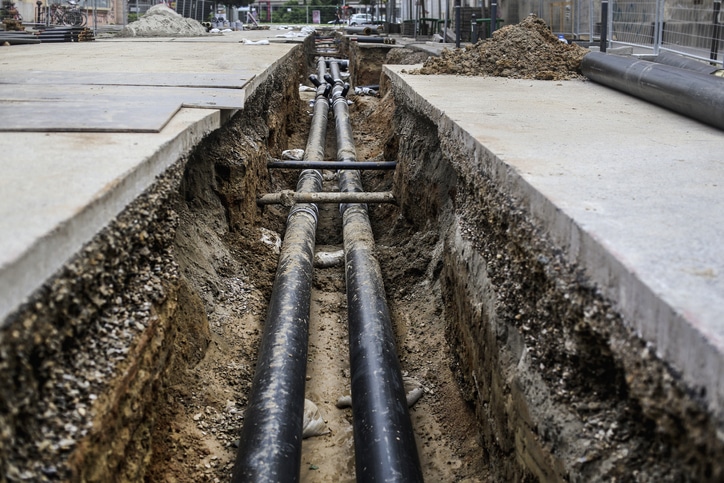How are Utility Trenches Backfilled?
After a trench has been dug and utility lines or gas mains laid, the backfilling process begins. It is the process of adding soil, aggregate, or other material into a trench or foundation after the excavation process and related work have been completed.
Adding backfill isn’t just a matter of simply pouring down soil and earth back in. It needs to be done carefully to ensure that the laid utility line does not move or there are no air bubbles that would cause any disturbance(s) later on.
The process requires extensive knowledge about the geological specifications, contract requirements, and soil conditions. Hence, utility service providers use a different construction technique based on where they are.
Here are some considerations that utility trench backfilling crews must make when backfilling trenches.
How Utility Trenches are Backfilled – Considerations
One of the biggest considerations that backfill crews must make is preventing excess force on pipelines – especially their joints. Despite being welded shut manually or via fast fusion, undue external and internal pressure can lead to the joints opening up, introducing leaks as a result.
You must also consider the shaft structure, cabling, or other buried elements. If any elements cannot bear weight, the backfill must be very light whether conditions are wet or dry.
Another consideration to make includes identifying how loose or compact the soil needs to be. Even if the trench was dug via micro trenching, compacting the dirt too much or too little can lead to cracks or air bubbles, respectively.
When backfilling, utility services typically add soil in layers or lifts. The soil lift will depend entirely on the type and nature of the soil and the compaction technique used (i.e., with water or via mechanical equipment). Generally, the layered backfilling process involves three steps:
- Adding 4-6 inches of soil to fill the trench. For micro trenches, these layers may be 2-3 inches. You should use In-organic fill material for this method that doesn’t have large debris chunks.
- A 1,000 to 5,000 lb. compactor can be used as deemed appropriate.
- The soil is then watered and left to settle.
After a while, this step is repeated to achieve the right compaction.
Other methods used to backfill utility trenches include:
- Water jetting, where water is pumped under pressure and allowed to drain. As it drains, the soil grains keep on settling.
- Flowable fill, where cementitious material is added via a mix-truck. The fill is added into the trench-like concrete, except that it has a low water-cement ratio.
There are more techniques, but they aren’t common and are highly dependent on the type of trench and the environment. If you would like to learn more about utility trench backfilling or have a project in mind, give us a call and get a quick quote today!




